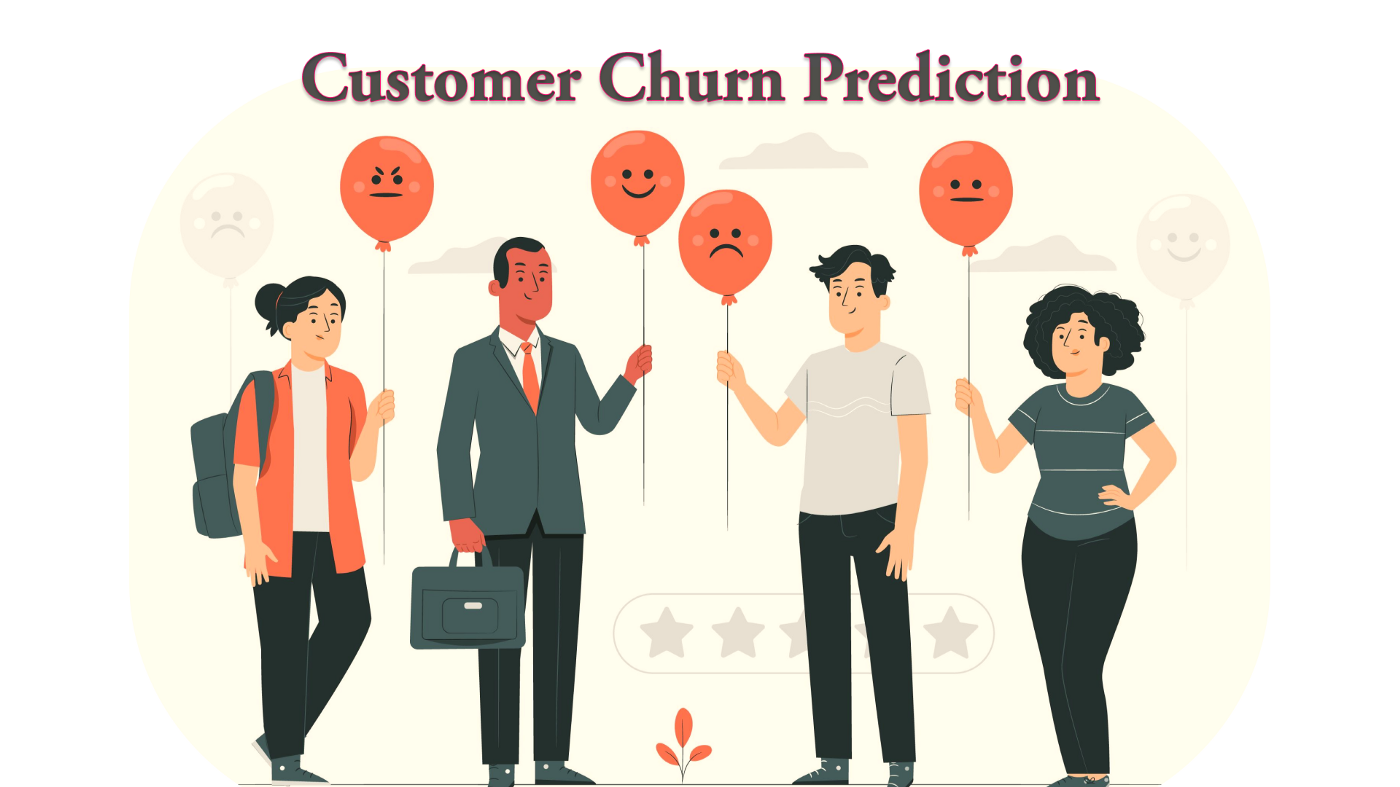 today’s competitive business landscape, keeping customers loyal is just as important as acquiring new ones. Customer churn, or the rate at which customers stop doing business with a company, can have a significant impact on a company’s revenue and growth. Fortunately, by leveraging data and predictive models, businesses can identify at-risk customers and take proactive measures to improve retention. In this blog, I’ll share how I used data analysis and machine learning to predict customer churn and drive retention strategies for a business.
today’s competitive business landscape, keeping customers loyal is just as important as acquiring new ones. Customer churn, or the rate at which customers stop doing business with a company, can have a significant impact on a company’s revenue and growth. Fortunately, by leveraging data and predictive models, businesses can identify at-risk customers and take proactive measures to improve retention. In this blog, I’ll share how I used data analysis and machine learning to predict customer churn and drive retention strategies for a business.
The Business Impact of Customer Churn
Customer churn directly affects a company’s bottom line. High churn rates can result in lost revenue, increased customer acquisition costs, and reduced customer lifetime value (CLTV). Predicting churn allows businesses to identify customers who are likely to leave and implement targeted interventions to retain them. By reducing churn, businesses can enhance customer loyalty, maximize CLTV, and increase overall profitability.
Steps in Predicting Customer Churn
Predicting customer churn requires a combination of data analysis, feature engineering, and machine learning. Here’s how I approached the problem in a recent project where I built a churn prediction model for a subscription-based service.
1. Identifying the Customers
The first step in the project was identifying the customers and their key attributes. This involved collecting data from customer transactions, subscription information, and engagement metrics. Key features included:
- Customer ID
- Subscription Start and End Dates
- Last Transaction Date
- Average Order Value
- Frequency of Transactions
- Customer Service Interactions
This data provided a foundation for understanding customer behavior, including their purchasing patterns and interaction with the business.
2. Building Calculated Columns
To enrich the dataset and make it more suitable for machine learning, I created several calculated columns based on the raw data. These calculated columns helped quantify customer behavior and engagement. Some of the key calculated columns included:
- Tenure: The duration of the customer’s relationship with the business, calculated as the difference between the subscription start date and the last transaction date.
- Average Order Frequency: The average time between orders, calculated as the difference between transaction dates divided by the number of transactions.
- Engagement Score: A composite score based on customer interactions, including purchase frequency and customer service interactions.
- Recency: The number of days since the last transaction, which provides insights into how recently a customer engaged with the business.
- Customer Lifetime Value (CLTV): A calculated metric that estimates the total revenue a customer is likely to generate during their relationship with the business. This is calculated using the formula:
CLTV = (Average Order Value) × (Purchase Frequency) × (Customer Tenure)
These features provided valuable insights into the likelihood of churn, as customers with lower engagement scores, shorter tenure, and lower CLTV were more likely to churn.
3. Identifying Customer Churn
Once the calculated columns were in place, I labeled the customers who had already churned and those who were still active. Customer churn was defined based on business rules, such as:
- Churned Customers: Customers who had not made a purchase or interacted with the business for a set period (e.g., 90 days).
- Active Customers: Customers who had made a recent purchase or were actively using the service.
This labeling allowed us to create a binary target variable, where 1 indicated a churned customer and 0 indicated an active customer. This target variable was then used to train the machine learning model.
4. Segmenting Customers Based on CLTV and Churn Risk
To better understand the customer base, I used CLTV and churn risk to segment customers into different categories. This helped in developing targeted retention strategies. The key customer segments included:
- High CLTV, Low Churn Risk: These customers were the most valuable and least likely to churn. Retaining them was a top priority, as they contributed significantly to the company’s revenue.
- High CLTV, High Churn Risk: These customers were valuable but at risk of leaving. Targeted retention efforts, such as personalized offers and incentives, were critical for this group.
- Low CLTV, High Churn Risk: These customers were less valuable and more likely to churn. Retaining them may not have been cost-effective, but identifying common churn patterns among them provided valuable insights.
- Low CLTV, Low Churn Risk: These customers were stable but contributed less revenue. Upselling or cross-selling strategies could be used to increase their CLTV.
5. Building the Machine Learning Model
With the data preprocessed and customers segmented, I built a machine learning model to predict churn. The model was designed to classify customers as either likely to churn or likely to remain active. I used several algorithms, including:
- Logistic Regression: A simple classification model that provided a baseline for churn prediction. While it was easy to interpret, its performance was limited for complex patterns in the data.
- Random Forest: An ensemble learning method that used multiple decision trees to improve prediction accuracy. Random Forest handled the complexity of the data better than Logistic Regression, providing higher accuracy.
- K-Means Clustering: An unsupervised learning algorithm that was used for segmenting customers into different clusters based on CLTV and churn risk. It provided valuable insights into customer behavior and allowed us to tailor retention strategies for each cluster.
Ultimately, I selected Random Forest as the final model due to its ability to handle a wide variety of features and its high accuracy in predicting churn. The model achieved an accuracy of over 90%, with strong performance in identifying high-risk customers.
6. Evaluating the Model
To evaluate the performance of the churn prediction model, I used a variety of metrics, including:
- Accuracy: The percentage of correctly predicted churned and non-churned customers.
- Precision: The proportion of customers predicted to churn who actually churned, which is important for minimizing false positives.
- Recall: The proportion of actual churned customers that the model correctly identified, ensuring that we catch as many high-risk customers as possible.
- F1 Score: A balanced metric that combines precision and recall to give a holistic view of model performance.
Conclusion
Predicting customer churn is a critical step in driving retention strategies and ensuring business growth. By using data analysis, feature engineering, and machine learning, businesses can identify at-risk customers and take proactive steps to retain them. In my project, I combined calculated columns like CLTV, tenure, and engagement scores with machine learning algorithms to predict churn and segment customers. This approach allowed the business to not only identify high-risk customers but also develop tailored retention strategies to maximize customer lifetime value.
As businesses continue to collect and analyze customer data, predictive models for churn detection will play an increasingly important role in customer retention. By identifying patterns in customer behavior and taking action before customers churn, businesses can reduce revenue loss, improve customer loyalty, and stay ahead of the competition.


Comments
Post a Comment